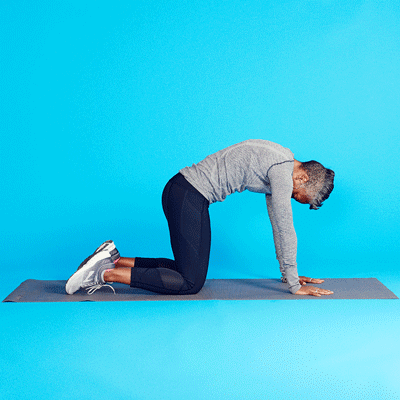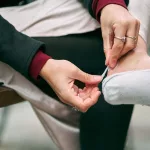Lower back discomfort is widespread, and there are many possible causes. Targeted stretches can help ease lower back pain and increase flexibility in tense muscles.
Sometimes lower back pain indicates an underlying medical issue, such as kidney stones or acute pancreatitis.
At other times, it results from prolonged sitting, repetitive activities, or a strained muscle.
While stretching won’t cure every source of lower back pain, it can offer relief in many cases. Keep reading to discover seven stretches that may help.
Which stretches are best for the lower back?
Certain yoga postures, like Child’s Pose, and mild moves like the pelvic tilt can help loosen tight lower back muscles.
Be especially cautious if you have an injury or medical concerns. Consult a physician before beginning any new exercise routine, particularly if you’re experiencing pain after a recent injury.
The guidance is to avoid sudden jerky movements that might jolt or overstress your back and to favor low-impact exercises that strengthen your back and core muscles.
Perform these stretches once or twice daily. If your lower back pain worsens or you feel particularly sore, consider taking a day off from stretching.
Pay attention to your body’s limits and don’t push beyond them. Tune into what feels right for you at any given moment.
As you move through these stretches, go slowly and focus on your breathing. Let your breath guide you to prevent straining or overexertion. Maintain steady, comfortable breathing throughout each stretch or pose.

2. Knee-to-chest stretch
This move relaxes the hips, thighs, and gluteal muscles while encouraging a sense of release.
To perform the knee-to-chest stretch, follow these steps:
- Lie on your back with both knees bent and feet flat on the floor.
- Keep your left knee bent or extend it straight along the floor.
- Bring your right knee toward your chest, holding behind your thigh or at the top of your shin.
- Lengthen your spine down to the tailbone, avoiding lifting your hips.
- Breathe deeply and let go of any tightness.
- Hold for 30 seconds to 1 minute.
- Repeat with the opposite leg.

Modifications
Place a pillow under your head for added comfort. If reaching your leg is difficult, loop a towel around it to assist.
To intensify the stretch, tuck your chin to your chest and lift your head toward your knee.
3. Piriformis stretch
This stretch targets the piriformis, a deep muscle in the gluteal region. Stretching it can ease tightness and discomfort in the buttocks and lower back.
To perform the piriformis stretch, follow these steps:
- Lie on your back with both knees bent and feet flat on the floor.
- Cross your right ankle over the base of your left thigh.
- Place your hands behind your left thigh and draw it toward your chest until you feel a stretch.
- Hold for 30 seconds to 1 minute.
- Repeat on the other side.

Modifications
Keep the foot of the supporting leg planted on the floor to make the stretch gentler. Support your head on a cushion if needed.
4. Seated spinal twist
This traditional twist opens the hips, glutes, and back. It enhances spinal mobility and stretches the abdomen, shoulders, and neck. The compression involved also stimulates internal organs.
To perform a seated spinal twist, follow these steps:
- Sit on the floor with both legs extended in front of you.
- Bend your left knee and set your foot outside your right thigh.
- Place your right arm on the outside of your left thigh.
- Put your left hand behind you for support.
- Begin the twist from the base of your spine, turning to the left.
- Hold for up to 1 minute.
- Repeat on the opposite side.

Modifications
To increase comfort, keep both legs straight. For an added stretch, incorporate neck rotations: inhale to look forward and exhale to turn your head backward. Do 5 to 10 repetitions on each side.
5. Pelvic tilt
Pelvic tilts strengthen the abdominal muscles, helping alleviate lower back tightness and pain. They also engage the glutes and hamstrings.
To perform a pelvic tilt, follow these steps:
- Lie on your back with both knees bent and feet flat on the floor.
- Engage your abs to press your lower back into the floor.
- Breathe normally and hold for up to 10 seconds.
- Release and take a few deep breaths to relax.
- Complete 1 to 3 sets of 3 to 5 repetitions.

6. Cat-Cow
Cat-Cow is an excellent sequence to mobilize the spine while stretching the shoulders, neck, and chest.
To do Cat-Cow, follow these steps:
- Come to all fours in a tabletop position (hands and knees on the floor).
- Press into your hands and feet as you inhale, lifting your gaze and allowing your belly to drop.
- Exhale, tuck your chin to your chest and round your spine toward the ceiling.
- Flow between these movements with each breath.
- Continue for 1 to 2 minutes.

Modifications
If your wrists are sensitive, move your hands slightly forward instead of directly beneath your shoulders. If your knees need padding, place a cushion under them.
For longer holds, pause in each position for 5 to 20 seconds rather than moving with every breath.
7. Sphinx stretch
The sphinx stretch is a gentle backbend that blends activity with relaxation. This mild extension stretches and strengthens the spine, glutes, and chest.
To perform the sphinx stretch, follow these steps:
- Lie on your stomach with elbows beneath your shoulders and hands extended in front, palms down.
- Set your feet slightly apart—the big toes may touch.
- Engage your lower back, glutes, and thighs slightly as you lift your head and chest.
- Keep the lower back and abs active while breathing deeply.
- Press your pelvis into the floor.
- Look straight ahead or softly close your eyes.
- Hold for 30 seconds to 1 minute.

Frequently asked questions
What stretches help lower back strain?
Gentle stretching and yoga postures can help reduce tension and loosen tight muscles in the lower back area.
Should I stretch my lower back if it hurts?
When your back hurts, mild stretching can sometimes offer relief. However, if even gentle movements cause pain, consult a doctor to determine the root cause.
A physician might order imaging like an X-ray or MRI to identify the source of your pain. Some conditions require further treatment, which may include:
- medications such as anti-inflammatories, muscle relaxants, or pain relievers
- physical therapy
- injections, including corticosteroids
- surgery, in rare cases when pain continues
The bottom line
Your lower back supports many daily activities—from walking and running to getting out of bed. Regular stretching helps maintain and enhance flexibility, release tension, and contribute to building strength.


















Leave a Reply
You must be logged in to post a comment.